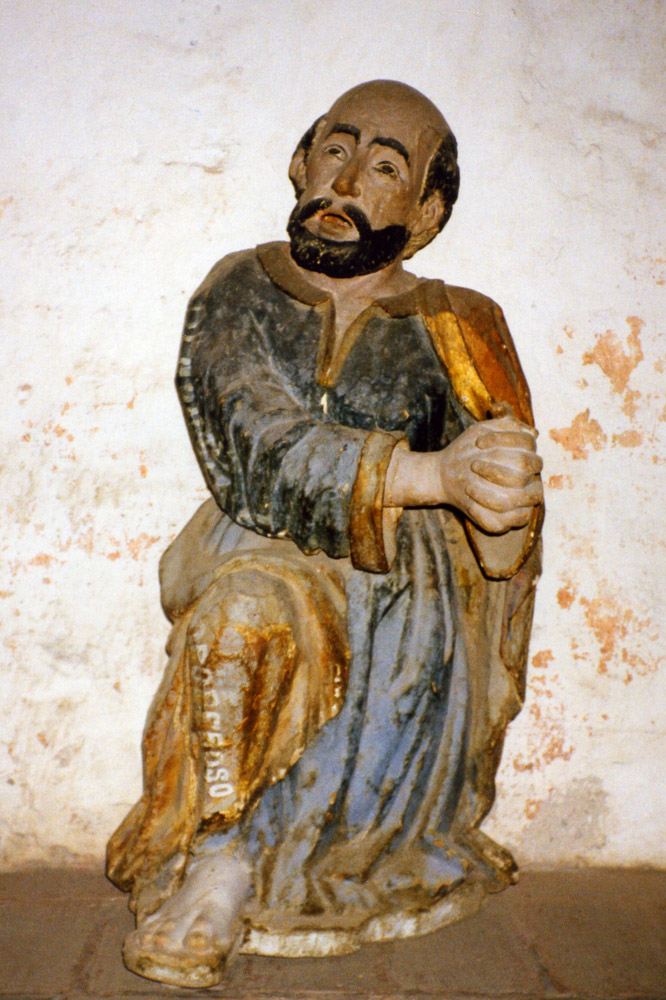Santos in Oaxaca's Ancient Churches
A study of santos in 16th-century and other churches in Oaxaca, Mexico


By Claire and Richard Stracke
Funded by a grant from the Rockefeller Foundation
In Teposcolula:
Angel 1
Angel 2
Bishops group
(two bishops, one monk)
Christ:
Ecce Homo
Christ fallen
with the cross
Christ in a
coffin
Christ in a
crown (with crowned infant Christ)
Christ
seated in the pretorium ("Pensive Christ")
Crucifix 1
(Calvary group)
Crucifix
2
Crucifix 3
Crucifix case
(with Mary, the Magdalene, one other saint)
Crucifixes
(two, with two unidentified saints)
Crucifixion
Group
Our Lady of
Mount Carmel
Our Lady of
Sorrows (Soledad) 1
Our Lady of
Sorrows (Soledad) 2
Our Lady of the
Rosary (with St. Dominic and a crucifix)
Palm Sunday
Christ
Resurrected
Christ
Sacred
Heart of Jesus
St. Anthony
of Padua
St. Isidore the
Laborer
St. Mary
Magdalene
St. Michael 1
St. Michael 2
St. Michael 3
St. Paul
St. Peter
St. Veronica
Saints
Peter and Paul (?)
Unidentified
Dominican
Unidentified
female saint 1
Unidentified
female (?) saint 2
Unidentified
Franciscan
Unidentified
monk 1
Unidentified monk 2
Unidentified monk 3
Unidentified monk 4
Unidentified priest
1
Unidentified
priest 2
Unidentified
saint 1
Unidentified
saint 2
Unidentified saint 3
Unidentified
saint 4
Unidentified
saints (two in a cell)
Unidentified
saints (three in a cell)
Virgin
Mary
